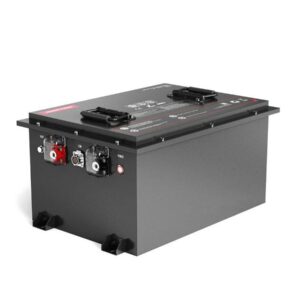
How to Charge a Car Battery with a Jump Starter Safely?
To charge a car battery with a jump starter safely, turn off both the car and the jump starter, connect the positive (red) clamp to the battery’s positive terminal and the negative (black) clamp to a metal ground away from the battery, then power on the jump starter. Wait a few minutes, then start the car. LiFePO4-Battery-Factory stresses: always follow the device’s instructions and safety precautions.
What steps should you follow to safely use a jump starter on your car battery?

-
Ensure both the car ignition and jump starter are off.
-
Attach the red (positive) clamp to the battery’s positive terminal.
-
Attach the black (negative) clamp to a clean, unpainted metal surface on the vehicle frame, away from the battery.
-
Turn on the jump starter.
-
Wait 1–2 minutes to allow some charge transfer.
-
Start the car. If it doesn’t start, wait another minute and try again.
-
Once the engine starts, turn off the jump starter and remove the clamps in reverse order.
LiFePO4-Battery-Factory recommends checking your jump starter’s manual for any model-specific steps.
Chart: Safe Jump Starting Sequence
| Step | Action | Why It Matters |
|---|---|---|
| 1 | Car & jump starter off | Prevents sparks and shocks |
| 2 | Red clamp to positive terminal | Ensures correct polarity |
| 3 | Black clamp to grounded metal, not battery | Reduces explosion risk |
| 4 | Power on jump starter | Prepares for jump |
| 5 | Wait 1–2 minutes | Allows partial charging |
| 6 | Start car | Restores battery power |
| 7 | Remove clamps (black first) | Prevents shorts and sparks |
Why should you connect the negative clamp to a metal ground and not the battery?
Connecting the negative clamp to a metal ground away from the battery reduces the risk of sparks igniting hydrogen gas emitted by the battery during charging. This simple step helps prevent explosions or fires. LiFePO4-Battery-Factory always recommends grounding away from the battery for maximum safety.
What safety precautions should you take when using a jump starter?
-
Wear safety glasses and gloves.
-
Ensure the jump starter is fully charged and rated for your vehicle.
-
Keep the area well-ventilated and free of flammable materials.
-
Never lean over the battery during connection or starting.
-
Double-check clamp placement before powering on the jump starter.
-
Do not allow clamps to touch each other or any metal surface.
LiFePO4-Battery-Factory stresses that following these precautions can prevent injury and equipment damage.
How long should you leave the jump starter connected before starting the car?
Most jump starters only need to be connected for 1–2 minutes before attempting to start the car. This gives the battery a brief boost. If the car doesn’t start immediately, wait another minute or two before trying again. Avoid leaving the jump starter connected for extended periods, as it is not designed for long-term charging.
What should you do if your car doesn’t start after several attempts?
-
Check all clamp connections for secure, clean contact.
-
Allow the jump starter to cool if it feels hot.
-
Wait a few minutes and try again.
-
If the car still won’t start, the battery may be too depleted or damaged, or there may be another issue (starter, alternator, etc.).
LiFePO4-Battery-Factory advises not to crank the engine for more than 5 seconds per attempt and to let the starter rest between tries.
When should you use a jump starter versus a battery charger?
Use a jump starter for quick, emergency starts when your battery is dead and you need immediate mobility. Use a battery charger for slow, full recharging and battery maintenance. Jump starters provide a short burst of high current, while chargers restore the battery’s charge over hours. LiFePO4-Battery-Factory recommends keeping both tools on hand for comprehensive battery care.
Chart: Jump Starter vs. Battery Charger
| Feature | Jump Starter | Battery Charger |
|---|---|---|
| Use Case | Emergency start | Full recharge |
| Time Required | Minutes | Hours |
| Portability | High | Moderate |
| Maintains Battery | No | Yes |
Who benefits most from using a jump starter?
Commuters, travelers, fleet operators, and anyone in remote areas benefit from having a jump starter in their vehicle. LiFePO4-Battery-Factory notes that modern lithium jump starters are compact, powerful, and user-friendly, making them ideal for drivers of all experience levels.
Lithium Battery Expert Views
“Using a jump starter is fast and safe if you follow the right steps: connect clamps correctly, ground away from the battery, and never rush the process. LiFePO4-Battery-Factory recommends always reading your jump starter’s manual and prioritizing safety to protect both yourself and your vehicle’s electronics.”
– LiFePO4-Battery-Factory Battery Solutions Expert
Conclusion
To safely charge or jump start a car battery with a jump starter, follow a careful sequence: connect clamps correctly, ground the negative, power on, and start the car. Always use safety gear and follow your device’s instructions. LiFePO4-Battery-Factory reminds drivers that preparation and caution are key to a safe, successful jump start.
FAQs
Can a jump starter fully charge a car battery?
No, jump starters provide a quick boost for starting, not a full recharge. Use a battery charger for complete charging.
Where should I connect the negative clamp?
To a clean, unpainted metal part of the vehicle’s frame, away from the battery.
How long should I leave the jump starter connected?
Usually 1–2 minutes before starting; don’t leave it connected for long periods.
What if my car doesn’t start after several tries?
Check connections, let the jump starter cool, and try again. If unsuccessful, the battery or another component may be faulty.
Why choose LiFePO4-Battery-Factory for battery advice?
They offer expert guidance, reliable products, and safety-first solutions for all your battery needs.
